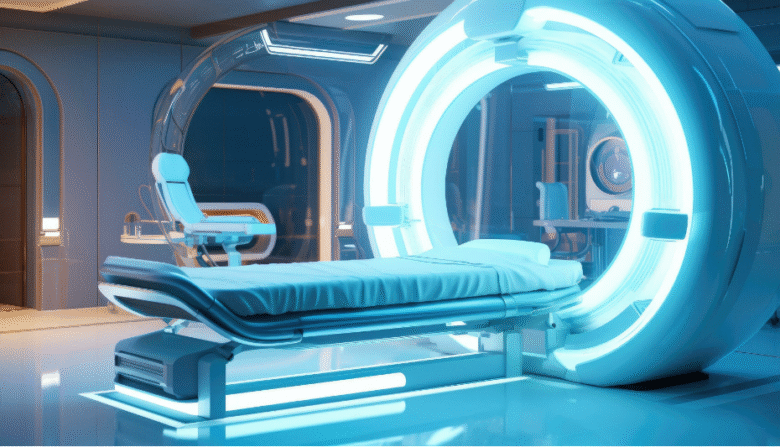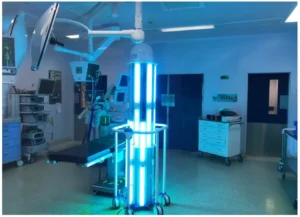Hospitals around the world are undergoing a subtle but profound transformation. At the heart of this transformation is smart technology. These tools, systems, and devices enable hospitals to improve performance, enhance connectivity, and better serve the needs of patients and healthcare professionals. Smart technology helps hospitals deliver better care, save time, reduce costs, and achieve better outcomes through the use of digital records and smart devices. It changes the way hospitals operate, moving from old-fashioned manual processes to intelligent, data-driven models that enable faster, more accurate decisions.
The Shift to Digital Patient Records
One of the most significant impacts of smart technology on hospitals is the widespread use of electronic health records (EHRs). These electronic devices replace paper medical records and give doctors and nurses instant access to patient information. With just a few clicks, they can view a patient’s medical history, test results, scans, prescriptions, and more. This simplifies communication between departments and reduces errors that can occur due to missing or difficult-to-read records. Patients also gain more control by accessing their medical records online, making them more likely to actively participate in their care.
Smart Beds and Patient Monitoring Systems
Hospitals today are equipped with smart beds that do more than just provide comfort. These high-tech beds can track a patient’s movements, vital signs, and even weight. They can transmit this information in real time to a nurse’s station or mobile device. The device alerts medical staff when a patient is at risk of a fall, pressure sores, or other issues. Using smart monitors, caregivers can continuously monitor a patient’s heart rate, blood oxygen levels, and blood pressure, allowing them to respond more quickly to changes in a patient’s condition. These technologies ensure that subtle warning signs are not missed, ultimately ensuring patient safety.
Automating Hospital Operations
Smart technology automates many tasks that used to be time-consuming and tedious, making hospital operations run more smoothly. Today, robots can deliver bedding, meals, and medications to different departments in a hospital. These self-driving devices can follow fixed routes, avoid obstacles, and reduce the need for people to perform the same tasks repeatedly. Tools like self-service check-in kiosks, digital appointment scheduling, and electronic follow-up reminders all contribute to automation. These conveniences simplify the work of medical staff and improve the overall experience for patients, allowing them to focus more on care instead of paperwork.
Using AI for Diagnosis and Treatment
AI is playing a major role in changing the way hospitals provide care. AI systems can analyze large amounts of medical data, such as scans and genetic information, and find patterns that are invisible to humans. For example, AI can help radiologists find early indicators of disease in X-rays or magnetic resonance imaging (MRI). Based on a patient’s medical history, AI can help determine which patients are most likely to have problems or need to be readmitted to the hospital. This predictive value allows doctors to intervene before problems occur, resulting in faster, more targeted treatment measures and better treatment outcomes.
Precision Robotic Surgery and Instruments
Smart technology is also revolutionizing the performance of surgeries. Robotic surgical systems, operated by skilled surgeons, can achieve precision that traditional equipment cannot. These devices use small instruments and high-definition cameras to perform surgeries that do not require extensive incisions. As a result, patients experience less discomfort, shorter hospital stays, and faster recovery. Real-time imaging and navigation systems are also smart surgical instruments that help surgeons visualize tissues, organs, and tumors during surgery. This makes surgery more precise and reduces the risk of problems during complex surgeries.
Inventory and Asset Management Systems
Hospitals need a wide range of instruments and supplies, and keeping track of all inventory is critical for making sure everything runs smoothly. Smart inventory systems can track everything from surgical instruments to pharmaceutical inventory using RFID tags and barcode scanners. These devices let staff know when supplies are running low or when equipment needs to be repaired. This reduces waste, prevents shortages, and saves money. In the event of an emergency, staff can quickly locate critical instruments or machinery, saving time and improving patient care. These smart systems ensure that hospitals are always prepared and have the right tools to respond to any crisis.
Smart Lighting, Climate, and Energy Efficiency
Smart building technology is also helping hospitals pay more attention to the environment. Automated lighting, temperature control, and ventilation technologies allow hospitals to provide a more comfortable environment for patients and staff while reducing energy consumption. Sensors can detect when a room is empty and adjust lighting and temperature to conserve energy. These green technologies reduce costs and create a healthier environment by purifying the air and reducing noise. By focusing on creating a comfortable atmosphere, patients can recover and reduce stress during hospital stays.
Conclusion
Smart technology is making hospitals safer, more efficient, and more satisfying for patients. Smart solutions are improving every aspect of hospitals, from electronic patient records and automated logistics to improved diagnostics and robotic surgery. These new ideas are making care more precise, personalized to each patient, and better tailored to their needs. Hospitals are changing the future of medicine by implementing new technologies. These technologies are not only changing the way hospitals operate but also how medicine will function in the future. Smart technology is no longer a luxury; it is becoming a permanent feature of modern hospitals, which are dedicated to providing the best possible care to patients.
FAQs
1. Are smart hospital systems safe for patient data?
While cybersecurity remains a top priority, hospitals are protecting electronic patient records and ensuring patient privacy by using secure networks and encryption.
2. Can patients access their own medical records?
Patients can view their test results, medical history, and appointment schedules on many hospital portals. This helps them stay informed and engaged in their care.
3. What is remote patient monitoring?
It uses wearable devices or home monitors to send health information to hospitals, allowing doctors to monitor patients and provide treatment without having to travel .
4. Are all hospitals using smart technology?
Not all hospitals have fully implemented smart technology, but many are investing in improvements to provide better, faster, and more patient-friendly care.
5. What does the smart hospital of the future look like?
More AI integration, smarter automation, more advanced robotics, and better patient engagement will make hospitals smarter and more patient-friendly than ever .




